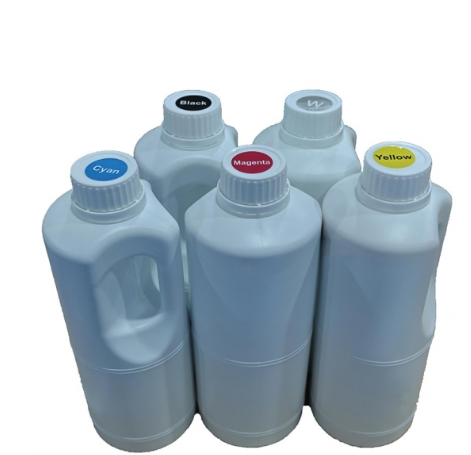Why Durability Matters: The Everyday Value of DTF
Durability is a vital part of any print method, especially for garments that will be worn and washed often. Direct‑to‑Film (DTF) printing has surged in popularity because it delivers rich colors and a soft hand feel, but what truly sets it apart is its lasting power. Properly applied DTF transfers bond tightly to the fibers of cotton, polyester, and blends, resisting cracking or fading even under frequent use. This means that for small businesses, hobbyists, and professional printers alike, DTF opens up new opportunities for custom garments that look fresh after dozens of wears. By understanding how DTF works and how to care for it, you can extend the life of your prints and maximize your investment.
How long do DTF prints last? Understanding the numbers
One of the most common questions new printers ask is simple: How long do DTF prints last? Industry tests show that a well‑applied transfer can endure between 50 and 100 wash cycles before noticeable degradation. That range depends on factors like transfer materials and how the garment is cared for. Some fabrics such as hoodies or sweatpants may show more wear around forty washes because thicker materials trap moisture and heat during drying. On tote bags or caps, a DTF print may look great after sixty washes or more. The bottom line is that DTF offers a lifespan comparable to screen printing and longer than methods like vinyl or direct‑to‑garment.
What is the lifespan of a DTF print?

A DTF print’s lifespan is measured in wash cycles, but numbers alone don’t tell the whole story. Longevity involves both appearance and structural integrity. A print that stays vibrant but feels stiff isn’t delivering the best experience. High‑quality DTF Inks, reliable DTF printers, and top-notch DPI DTF Inks make a big difference. Premium films and powders ensure even bonding and flexibility, so with the right supplies and equipment, most DTF prints can last as long as the garment itself.
Do DTF fade over time?
Like all printed textiles, DTF designs will eventually show signs of wear, but fading is less pronounced with DTF than some other methods. High‑pigment inks and durable adhesive powders keep colors bright when proper care is taken. Most fading comes from hot water, harsh detergents, or over‑drying rather than an inherent weakness in the print. To keep graphics sharp, wash garments inside out on a gentle cycle and line dry when possible. Choosing quality DTF Supplies and following manufacturer guidelines further reduce the risk of color loss.
Do DTF transfers crack?
Cracking is a big concern when it comes to heat‑applied graphics. Thin or brittle transfers can fracture along stress points, especially on fabrics that are frequently stretched. DTF technology addresses this issue by producing a flexible layer of ink and adhesive that moves with the fabric. When printed and cured correctly, the transfer creates a strong, pliable bond that resists cracking. Investing in reliable equipment and learning proper pressing techniques will prevent most issues, which is why professional shops favor trusted DTF Inks and DTF Printers.

What are the downsides of DTF?
Although DTF boasts impressive durability, it’s important to consider its drawbacks. The process can be more time‑consuming than direct‑to‑garment printing because it requires several steps: printing the design, applying powder, curing, and pressing. Upfront costs of quality equipment and supplies are higher than simpler methods like vinyl cutting. Some users note that poorly applied DTF can have a slightly rubbery feel, which might be less desirable for lightweight garments. While DTF works on many fabrics, longevity still depends on proper curing and care, so screen printing or sublimation may be better for certain projects.
Factors that influence how long DTF prints last
Multiple variables determine how long your DTF prints will look their best:
-
Material quality – premium films, powders, and inks are the foundation of a durable print. Poor materials often lead to fading or peeling after just a few washes.
-
Press settings – accurate temperature (usually 260–300 °F), firm pressure, and correct pressing time ensure strong adhesion. Missteps here can reduce lifespan dramatically.
-
Fabric choice – smooth, flat fabrics like cotton and polyester offer better results than heavily textured or stretchy materials, which can disrupt adhesion and cause early wear.
-
Curing process – under‑curing prevents the powder from bonding fully, while over‑curing can scorch the ink. Following guidelines for your specific equipment is crucial.
-
Care practices – washing inside out, using mild detergent, and drying on low heat will help maintain color and flexibility. Harsh chemicals, bleach, or high heat can quickly degrade a DTF print.
By controlling these factors and selecting quality consumables, you can significantly extend the life of your DTF garments.
How long do DTF prints last? A comparison with other methods
To better understand the durability of DTF, it helps to see it alongside other printing methods:
| Method | Durability | Notes |
|---|---|---|
| DTF | 50–100 washes | Works on most fabrics; vivid color |
| Screen Printing | 40–50 washes | Great for bulk orders and bold designs |
| Direct‑to‑Garment (DTG) | 25–40 washes | Best on cotton; may fade sooner |
| Heat Transfer Vinyl (HTV) | 20–30 washes | Ideal for simple shapes; can crack |
| Sublimation | 100+ washes | Extremely durable but only works on polyester |
This table shows that DTF competes with or outperforms most traditional methods, especially when you need versatility across different fabric types.
Tips to extend the life of your DTF prints
Your approach after printing plays a huge role in longevity. Always pre‑press garments to remove moisture and smooth out the surface. After transferring the film, perform a second press to lock in adhesion. When it comes to washing, turn the garment inside out and choose cold water; avoid bleach and fabric softeners. Air drying is preferred, but if you use a dryer, select a low‑heat setting to prevent heat damage. For busy print shops, investing in commercial DTF Printers and industry‑standard MIMAKI INKS ensures consistent results.
Exploring other resources and repair guides
Curious about how DTF stacks up against screen printing? There are in‑depth comparisons available, such as the repair guide article Is DTF better than screen printing? which breaks down the pros and cons of each technique. You might also explore expert opinions from professional print suppliers; for instance, one external source notes that with the right supplies and application, DTF designs on shirts can last over fifty washes with minimal fading. As you delve into different methods, remember that the right choice depends on your budget, design complexity, and end use.
Final thoughts
DTF printing has revolutionized custom apparel by combining versatility with impressive durability. While no print method is truly permanent, DTF delivers a lifespan that satisfies most commercial and personal needs, often outlasting the garments themselves. Using quality DTF Supplies, honing your pressing technique, and practicing careful garment care will help ensure that your prints stay crisp wash after wash. With this knowledge, you can confidently produce beautiful, long‑lasting designs for friends, clients, and yourself.








